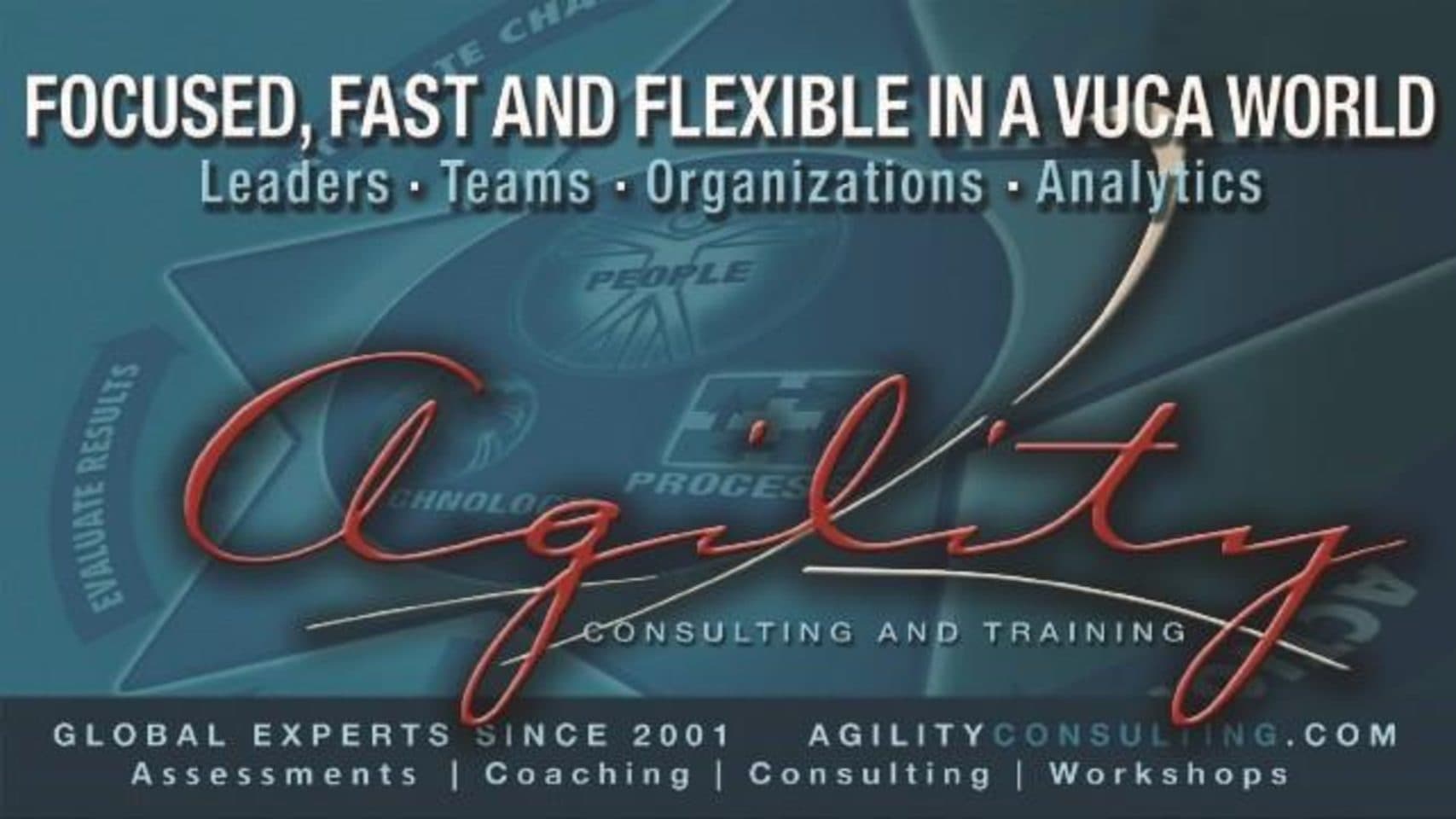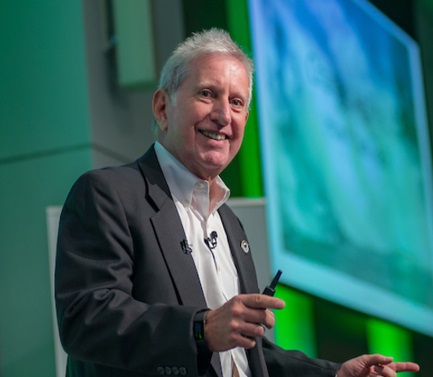Well, based on all that hoo-ha, I'm 85 years old. So anyhow, I'm looking forward to this, and I really appreciate the opportunity to come together with many of you—different lenses, different points of view, etc. I think that's what business agility is all about. I'm really excited that we have an opportunity to share some of this with you. As part of that process, I’ll share a different point of view as well.
Now, we’ve been talking about deep dives, and Bill just mentioned deep dives. You see a picture of me right there—that's doing a deep dive. That's what deep dive means for everyone who has been talking about it. How many divers are in here? All right, that's deep diving, right? I like it.
Leadership Agility in 20 Minutes
With that, I want to share a whole host of perspectives, integrate some concepts, and introduce you to leadership agility—all within 20 minutes.
Why do we even discuss leadership agility? It was mentioned briefly in a previous presentation about VUCA. We'll get into that in more depth. I'll share with you a different lens on leadership agility—one from an organizational psychologist’s perspective. Specifically, I want to introduce a concept that might resonate with you: agility fitness, specifically leadership agility fitness.
Client Profiles
I want to share with you three significant client profiles—leaders from diverse industries:
- Sally Jewell – Former CEO of REI, later promoted to Secretary of the Interior in the Obama administration.
- Mark Nelson – President of the largest business unit at Aramark.
- Joe Musselman – Founder of The Honor Foundation, a nonprofit focused on transitioning SEAL team members into civilian careers.
In addition, I want to thank those of you who participated in the pre-assessment on leadership agility—around 40 to 45 of you. I had to cut it off to create the slides, but I'll report on 35 responses here. If you stop by the reception, I have a Leadership Agility Guide for you as a free giveaway.
Why Leadership Agility?
Why do we even talk about agility, let alone leadership agility? Does everybody know what VUCA stands for? Volatility, Uncertainty, Complexity, and Ambiguity. Why is that relevant?
It’s relevant because it’s accelerating. It's coming at us faster and faster all the time. We've introduced something called the VUCA Report, a tool for tracking trends and patterns affecting business. Leaders need to pay attention to this.
For example, is it the digital disruption happening? The gig economy? How many of you are aware of the gig economy? That’s a major shift in the workforce. Significant changes are happening in our VUCA world. Leadership agility, at least from my perspective, is all about effectively leading in a rapidly changing world. It’s not slowing down—if anything, it’s only going to accelerate.
The Cost of Ignoring VUCA
Several years ago, I was interviewed for Profile Magazine, a Finnish business publication. The topic was how businesses are going under due to what I call accelerated obsolescence.
Look at magazine publishers. How many of you used to get magazines? They’re disappearing. What are some other examples? Blockbuster. Kmart. These companies failed to pay attention to their VUCA environment. It’s not enough to track these trends—you have to act, something Kodak failed to do.
Agility Fitness
It’s late in the afternoon, so let’s get interactive. I want you to consider the five major contributors to physical fitness:
- Muscle building (strength training)
- Aerobic exercise
- Flexibility
- Good sleep (unaided—no drugs!)
- Balanced nutrition
If you do at least one of these regularly, stand up. Now, if you do at least two, keep standing. Three? Four? Five? Let’s hear it for those who do all five!
Your doctor or fitness instructor will tell you that true fitness isn’t just about muscle-building or just about sleep—it’s the combination of all these elements. The same principle applies to leadership agility.
The AGILE Model
From an organizational psychologist’s perspective, leadership agility can be broken down into five elements:
- Anticipate Change
- Generate Confidence
- Initiate Action
- Liberate Thinking
- Evaluate Results
This model integrates people, process, and technology. You need all three to truly achieve agility. If your people are agile but your processes are outdated, you’re still stuck.
Leadership Agility Case Studies
1. Sally Jewell – CEO of REI
During an offsite meeting, Sally asked, "Who is our primary competitor?" The answer? Amazon. Despite their best year ever, REI needed to disrupt its thinking. Millennials, fitness apps, and e-commerce were changing the game. We used maps and compasses in the field to teach agility and leadership agility.
2. Mark Nelson – President of Aramark
Aramark faced new challenges—demand for fresh food, local sourcing, and multi-brand offerings. Over 10 years, we conducted agility audits region by region, followed by agility coaching and training.
3. Joe Musselman – The Honor Foundation
Before 2013, only 13% of former Navy SEALs found jobs upon leaving service. Joe founded The Honor Foundation to address this gap, helping SEALs transition into civilian life.
Leadership Agility Self-Assessment
This heat map reflects the self-assessments of 35 participants:
- Strongest driver: Generate Confidence (teamwork, interactions, leadership presence)
- Weakest driver: Anticipating Change (particularly monitoring trends and patterns)
This assessment helps identify strengths, gaps, and areas for improvement. The goal is to develop a personalized Leadership Agility Development Plan.
Final Thought
Let me leave you with a quote:
"I alone cannot change the world, but I can cast a stone across the water to create many ripples." – Mother Teresa
Take what you know about leadership agility and use it to mentor, coach, and inspire others.
Thank you very much.




